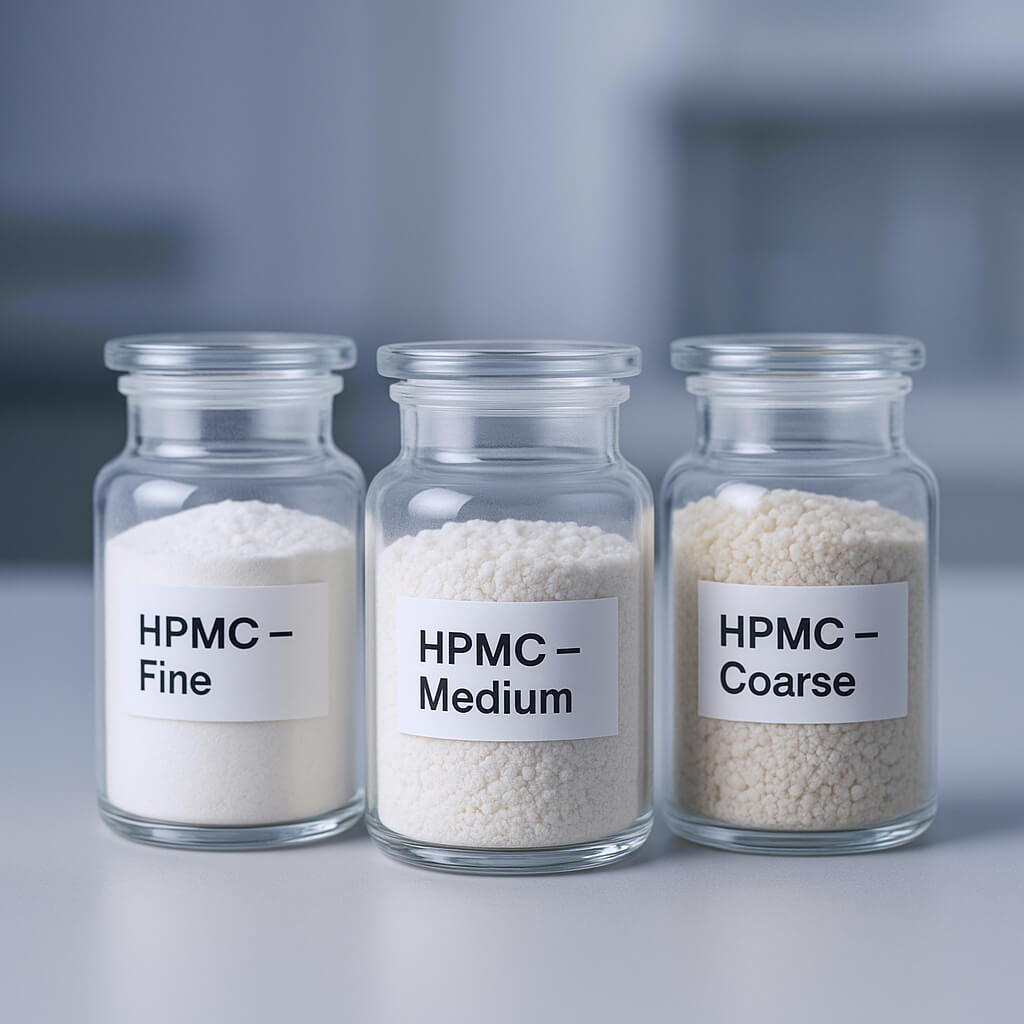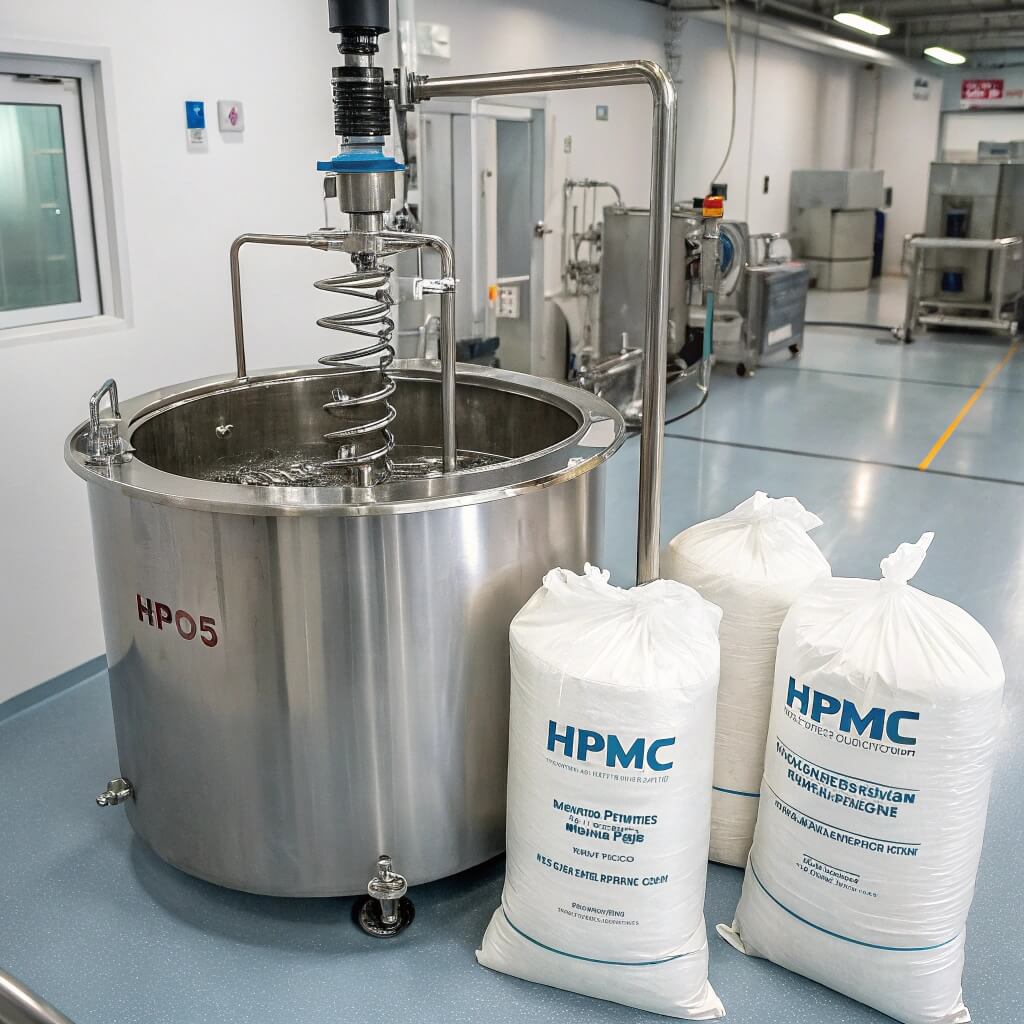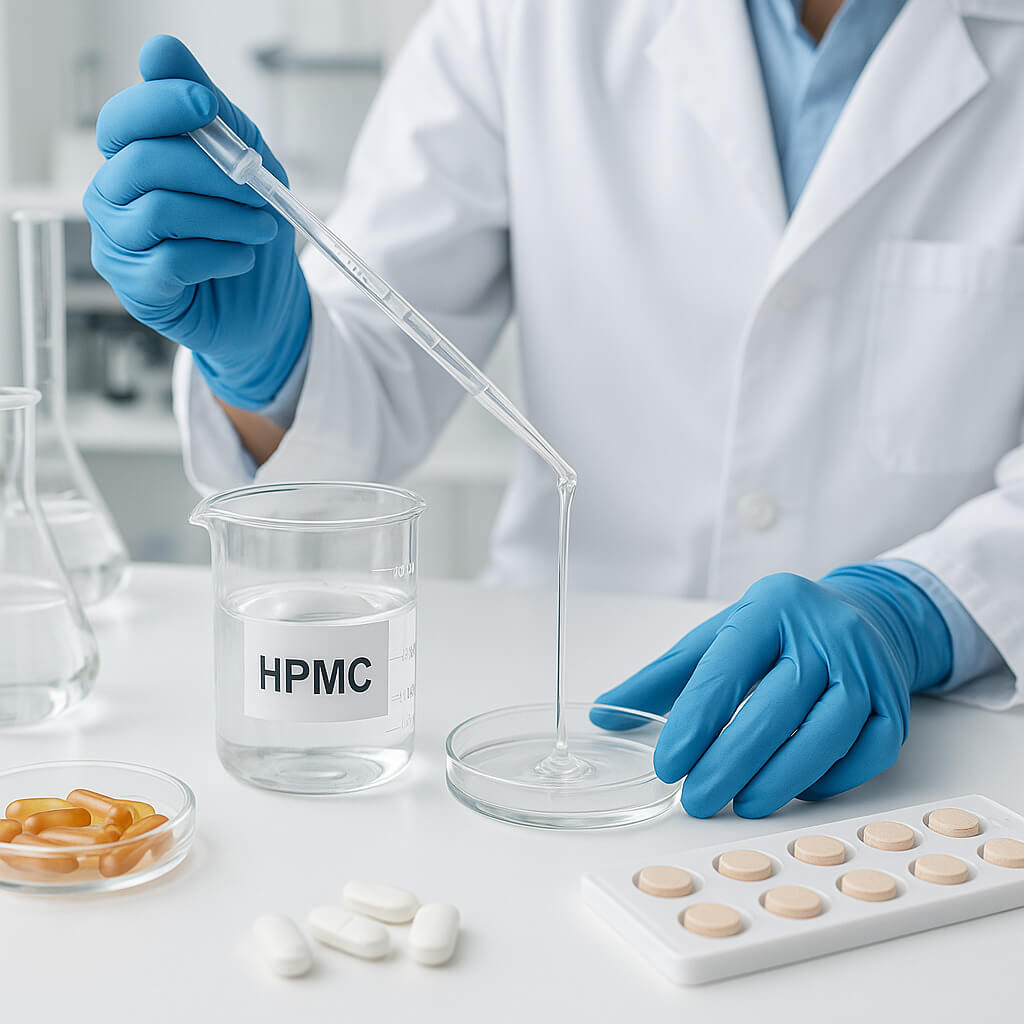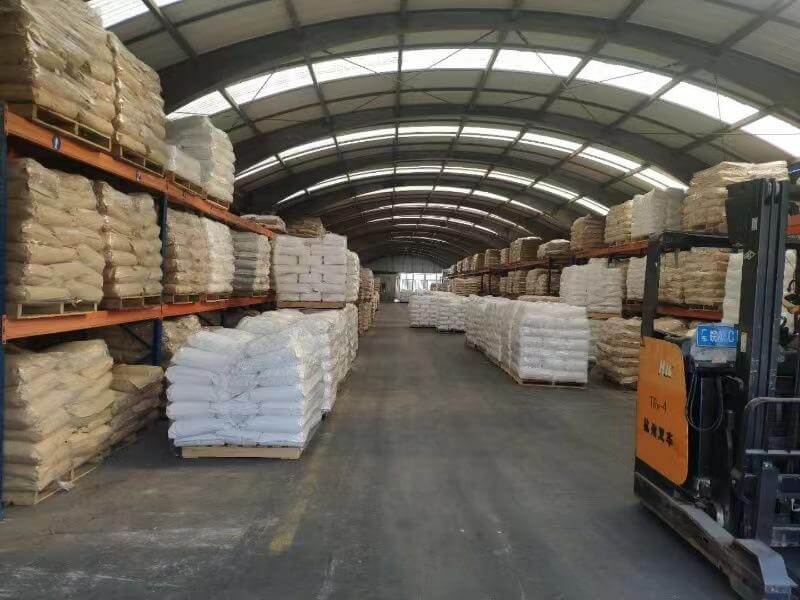Vous êtes-vous déjà demandé quel est l'impact de l'HPMC sur les performances des matériaux de construction ? Explorons son rôle dans l'amélioration de la maniabilité, de la rétention d'eau et de la stabilité des formulations de mortiers et de mastics en poudre.
Grâce à ses propriétés épaississantes, l'HPMC joue un rôle essentiel dans les applications de construction. Il améliore les performances des mortiers, adhésifs et autres produits cimentaires en améliorant la rétention d'eau, en prolongeant l'ouvrabilité et en assurant une meilleure adhérence et une meilleure consistance.

Image illustrant le rôle du HPMC dans les applications de construction, montrant son impact sur la consistance et les performances du mortier.
Comprendre les fonctions spécifiques de l'HPMC dans les applications de construction peut vous aider à optimiser son utilisation dans vos formulations. Examinons ses fonctions dans les mortiers secs et les poudres de mastic.
Quelles sont les fonctions clés du HPMC dans les formulations de poudre de mortier et de mastic ?
Le rôle principal de l'HPMC dans les formulations de mortiers et de mastics en poudre est d'agir comme agent épaississant et agent de rétention d'eau. Ces fonctions sont essentielles pour améliorer les performances et la consistance des matériaux de construction.
L'HPMC contribue à maintenir la viscosité adéquate, essentielle pour garantir la consistance du mortier ou du mastic pendant l'application et le séchage. Ceci est particulièrement important pour les produits comme les mastics muraux et les colles à base de ciment, où un mélange homogène et une application homogène sont essentiels pour une finition impeccable.
La capacité de rétention d'eau de l'HPMC permet une répartition plus uniforme de l'humidité, empêchant ainsi le mélange de sécher trop rapidement, ce qui peut entraîner des fissures ou une mauvaise adhérence. Le détail suivant met en évidence les rôles clés de l'HPMC dans ces formulations :
Rétention d'eau
La capacité de l'HPMC à retenir l'eau assure une hydratation plus longue des particules de ciment, ce qui favorise une meilleure adhérence et un meilleur durcissement. Sans une rétention d'eau adéquate, le mortier risque de sécher trop rapidement, réduisant ainsi sa résistance.
Maniabilité
L'HPMC haute viscosité améliore l'ouvrabilité des mortiers et mastics. Il permet une application plus fluide, un meilleur nivellement et réduit la formation de bulles, pour un produit final plus homogène et durable.
Adhésion et collage
La viscosité de l'HPMC améliore l'adhérence du mortier ou du mastic aux surfaces. Ceci est particulièrement important dans les applications telles que les colles à carrelage, où une forte adhérence est nécessaire pour garantir la durabilité.
Ces fonctions rendent l'HPMC indispensable pour les matériaux de construction de haute qualité. Voyons maintenant comment sélectionner le type et la viscosité d'HPMC adaptés à votre cas d'utilisation spécifique.
Comment sélectionner le bon type et la bonne viscosité HPMC en fonction du cas d'utilisation ?
Le choix du type et de la viscosité d'HPMC appropriés est crucial pour optimiser les performances de vos matériaux de construction. Le choix dépend de facteurs tels que l'application spécifique, les conditions environnementales et les caractéristiques souhaitées du produit.
L'HPMC est disponible en différentes viscosités, allant de la faible viscosité (environ 100 000 mPa·s) à la viscosité élevée (environ 200 000 mPa·s). Une viscosité élevée améliore la rétention d'eau et renforce les propriétés d'adhérence des matériaux de construction, tandis qu'une viscosité plus faible est mieux adaptée aux applications nécessitant un écoulement plus fluide et des temps de prise plus courts.
Le choix du type approprié dépend également de l'utilisation d'HPMC instantanée, soluble à chaud ou à froid. Les HPMC instantanées à froid sont utiles pour une dissolution rapide, tandis que types solubles à chaud[^1] offre une meilleure rétention d'eau et une consistance plus épaisse une fois dissous.
[^1] : Découvrez les types de HPMC solubles à chaud et comment ils améliorent la rétention d'eau et la consistance dans diverses formulations.
Voici comment faire le bon choix :
Tenez compte du type d'application
Pour les mortiers secs, une HPMC haute viscosité est préférable afin de garantir la consistance et la maniabilité du mélange pendant l'application. Pour d'autres produits, comme les adhésifs, une viscosité modérée peut être idéale pour assurer un étalement régulier sans épaisseur excessive.
Facteurs environnementaux
La température et l'humidité de l'environnement de travail peuvent également avoir un impact sur les performances de l'HPMC. Un environnement très humide peut nécessiter une meilleure rétention d'eau de l'HPMC, tandis qu'un environnement à faible humidité peut nécessiter un mélange plus fluide pour garantir une bonne étalabilité.
Caractéristiques souhaitées du produit
Si vous recherchez un produit à temps ouvert long (temps de prise), l'HPMC haute viscosité est la meilleure option. Pour des produits à prise plus rapide, une viscosité plus faible sera suffisante.
Le choix de la bonne viscosité et du bon type de HPMC garantit des performances optimales, offrant un équilibre entre maniabilité, adhérence et temps de prise en fonction des besoins spécifiques.
Quelles sont les meilleures pratiques pour dissoudre l’HPMC sans agglomération ?
L'un des défis de l'utilisation de l'HPMC est de garantir une dissolution uniforme et sans grumeaux. Ces grumeaux peuvent entraîner des irrégularités de qualité du produit et des problèmes d'application. Il est donc important de suivre les meilleures pratiques de dissolution.
Pour dissoudre efficacement l'HPMC, il est important de prendre en compte des facteurs tels que la température de l'eau, la vitesse d'agitation et le type d'HPMC utilisé. L'HPMC à haute viscosité a tendance à s'agglutiner plus facilement, ce qui nécessite une manipulation plus prudente pour garantir une solution homogène.
Voici les étapes pour dissoudre l’HPMC sans grumeaux :
Utilisez de l'eau froide pour les types instantanés d'eau froide
Les HPMC instantanés à base d'eau froide se dissolvent rapidement sans chauffage. Pour ces types de HPMC, il suffit de les ajouter directement à l'eau tout en remuant pour obtenir un mélange lisse et sans grumeaux.
Ajouter progressivement l'HPMC à l'eau
Évitez de verser l'HPMC d'un seul coup dans l'eau. Ajoutez-le plutôt progressivement en remuant constamment pour éviter la formation de grumeaux. Cela permet une dispersion uniforme et une dissolution plus efficace de l'HPMC.
Remuer constamment
Une agitation continue est essentielle pour éviter l'agglutination. Pour l'HPMC soluble à chaud, l'utilisation d'un agitateur mécanique peut garantir un mélange homogène et une dissolution homogène.
En suivant ces meilleures pratiques, vous pouvez vous assurer que le HPMC se dissout uniformément, ce qui améliore la qualité et la cohérence de vos matériaux de construction.
Comment identifier une HPMC de haute qualité ? (Tests visuels, physiques et fonctionnels)
Identifier un HPMC de haute qualité est essentiel pour garantir des performances optimales dans les applications de construction. Plusieurs tests permettent d'évaluer la qualité du HPMC en fonction de ses caractéristiques visuelles, physiques et fonctionnelles.
Inspection visuelle
Un HPMC de bonne qualité doit se présenter sous la forme d'une fine poudre blanche, sans grumeaux ni décoloration. Tout signe d'agglutination ou d'impuretés peut indiquer un matériau de mauvaise qualité, susceptible de ne pas offrir les performances attendues.
Propriétés physiques
Vérifiez la solubilité et la vitesse de dissolution de l'HPMC dans l'eau. Un HPMC de haute qualité doit se dissoudre facilement et rapidement sans former de résidus ni de grumeaux. La viscosité doit également être conforme à la qualité spécifiée par le fournisseur.
Tests fonctionnels
La méthode la plus efficace pour tester la qualité de l'HPMC est d'évaluer ses performances en conditions réelles. Son mélange à un mortier ou à un mastic en poudre et l'observation de ses propriétés de rétention d'eau, de viscosité et d'adhérence donneront une bonne indication de sa qualité.
En effectuant ces tests, vous pouvez vous assurer que l’HPMC que vous utilisez dans vos formulations répond aux normes requises en matière de performance et de stabilité.
Quels facteurs techniques affectent les performances et la stabilité du HPMC dans la construction ?
Les performances et la stabilité du HPMC dans les applications de construction dépendent de divers facteurs techniques, notamment la structure moléculaire, la viscosité et l’interaction avec d’autres matériaux du mélange.
Le type de cellulose utilisé pour produire l'HPMC, le degré de substitution hydroxypropylique et la viscosité influencent tous les performances de l'HPMC dans différentes applications. De plus, le pH du mélange et la présence d'autres additifs peuvent également influencer la stabilité de l'HPMC.
Structure moléculaire
La structure moléculaire de l'HPMC détermine sa solubilité, sa viscosité et ses propriétés fonctionnelles. Des variations de structure peuvent entraîner des différences de comportement du matériau lorsqu'il est mélangé à d'autres composants.
sensibilité au pH
L'HPMC est généralement stable dans une certaine plage de pH. Des conditions de pH extrêmes peuvent dégrader l'éther de cellulose, réduisant ainsi son efficacité dans les applications de construction.
Additifs et compatibilité
Lorsqu'il est mélangé à d'autres produits chimiques ou additifs dans les formulations de construction, l'HPMC doit être compatible pour garantir une dispersion adéquate et des performances optimales. Une incompatibilité avec certains matériaux peut entraîner un mauvais mélange ou une séparation.
En comprenant ces facteurs, vous pouvez mieux gérer les performances et la stabilité du HPMC dans vos produits de construction, garantissant des résultats cohérents entre différents lots.
FAQ
À quoi sert l'hydroxypropylméthylcellulose dans la construction ?
L'HPMC est largement utilisé dans la construction pour améliorer la maniabilité, la rétention d'eau et l'adhérence de matériaux tels que le mortier, le mastic et les colles à carrelage. Il garantit des performances et une durabilité supérieures aux produits à base de ciment.
Quelle est l’utilisation du HPMC dans le béton ?
L'HPMC est utilisé dans le béton pour améliorer sa rétention d'eau, sa maniabilité et sa force d'adhérence. Il assure un durcissement et une consistance adéquats du béton, pour des résultats plus solides et plus durables.
Quelles sont les utilisations des grades HPMC ?
L'HPMC est disponible en différentes qualités, chacune adaptée à des applications spécifiques. Les qualités à viscosité élevée sont utilisées dans les mortiers et les adhésifs pour améliorer la rétention d'eau et la maniabilité, tandis que les qualités à viscosité faible sont utilisées dans les produits nécessitant un écoulement plus fluide.
Quelle est la fonction de l'hydroxypropylméthylcellulose ?
L'HPMC remplit de multiples fonctions, notamment comme épaississant, agent de rétention d'eau et agent adhésif dans les matériaux de construction. Il améliore la consistance, la maniabilité et l'adhérence de produits tels que les mortiers secs et les colles à carrelage.
Conclusion
Le HPMC est un ingrédient clé dans les applications de construction, améliorant les performances des mortiers, des adhésifs et d'autres produits à base de ciment en améliorant la maniabilité, la rétention d'eau et l'adhérence.




